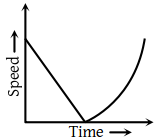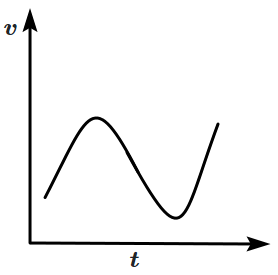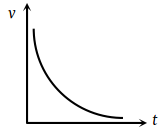A ball is thrown vertically upwards. Which of the following plots represents the speed-time graph of the ball during its height if the air resistance is not ignored?
1.

2.

3.

4.





Which graph represents a uniformly accelerated motion?
| 1. |  |
2. |  |
| 3. |  |
4. |  |
Which of the following velocity-time graphs shows a realistic situation for a body in motion?
| 1. |  |
2. |  |
| 3. |  |
4. |  |
Which of the following velocity-time graphs represent uniform motion.
| 1. |  |
| 2. |  |
| 3. |  |
| 4. |  |
Acceleration-time graph of a body is shown.
The corresponding velocity-time graph of the same body is:
| 1. |  |
2. |  |
| 3. |  |
4. |  |
The given graph shows the variation of velocity with displacement. Which one of the graphs given below correctly represents the variation of acceleration with displacement ?
| 1. |  |
| 2. |  |
| 3. |  |
| 4. |  |
The acceleration-time graph of a body is shown below.
The most probable velocity-time graph of the body is
| 1. |  |
| 2. |  |
| 3. |  |
| 4. |  |
From the following displacement-time graph , find out the velocity of a moving body.
1. m/s
2. 3 m/s
3. m/s
4. m/s
The v – t plot of a moving object is shown in the figure. The average velocity of the object during the first 10 seconds is
1. 0
2. 2.5 ms–1
3. 5 ms–1
4. 2 ms–1
Read the assertion and reason carefully to mark the correct option out of the options given below:
(1) If both assertion and reason are true and the reason is the correct explanation of the assertion.
(2) If both assertion and reason are true but reason is not the correct explanation of the assertion.
(3) If assertion is true but reason is false.
(4) If the assertion and reason both are false.
(5) If assertion is false but reason is true.
Assertion : A body can have acceleration even if its velocity is zero at a given instant of time.
Reason : A body is momentarily at rest when it reverses its direction of motion.





